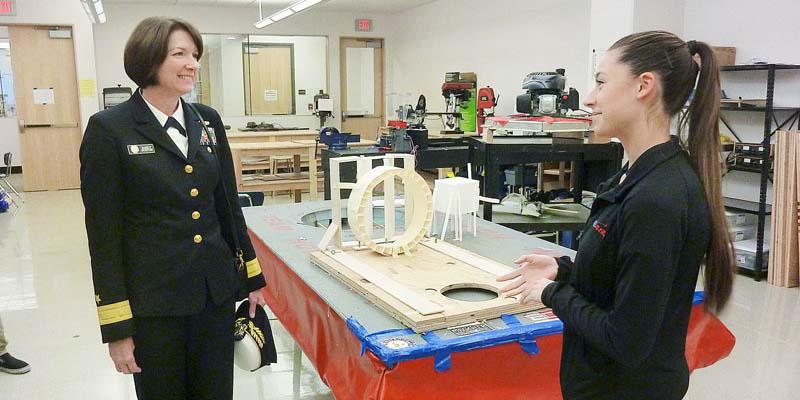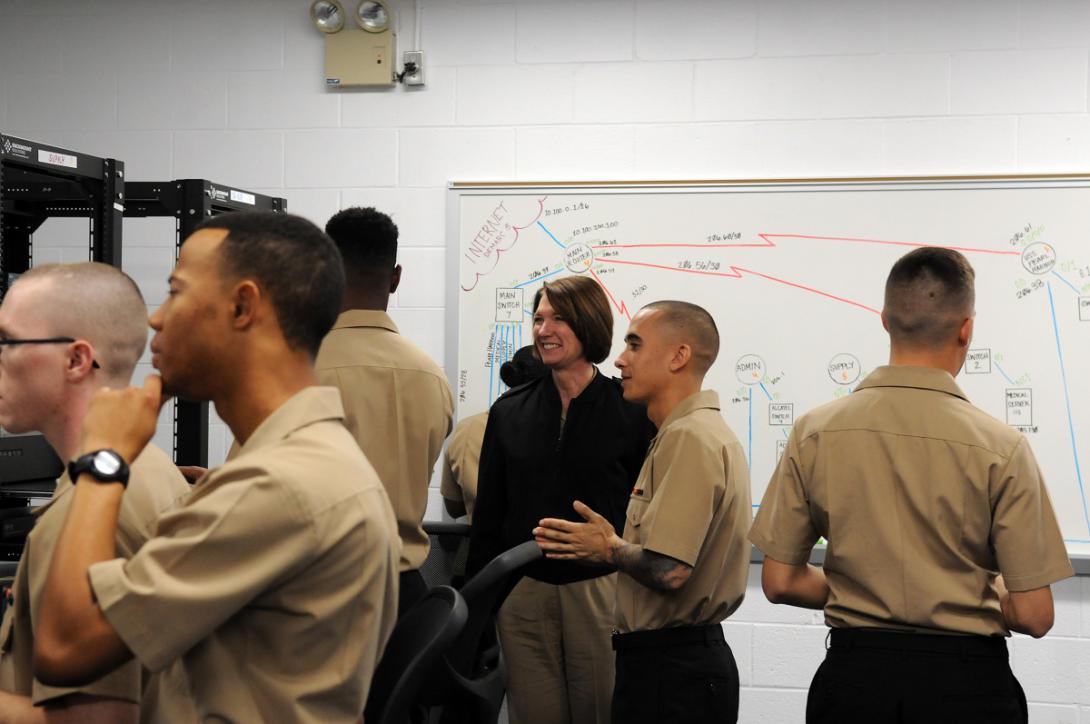Landing the It Job Before it Was In
There is a noticeable distinction between women in STEM in the military and women in STEM in the civilian world, says Rear. Adm. Nancy Norton, USN, director of warfare integration and deputy director for cybersecurity. For a while, jobs in science, technology, engineering and mathematics were just about all that were open to women seeking a career in the armed forces. Times have changed.
There is a noticeable distinction between women in STEM in the military and women in STEM in the civilian world, says Rear. Adm. Nancy Norton, USN, director of warfare integration and deputy director for Navy cybersecurity. For a while, jobs in science, technology, engineering and mathematics were just about all that were open to women seeking a career in the armed forces. Times have changed, and the U.S. Bureau of Labor Statistics projects that by 2020, there will be 1.4 million computer-science-related jobs available, but only 400,000-computer science graduates with the skills to apply for those jobs. The forecast appears bleaker for women. SIGNAL Media and AFCEA International’s Women in AFCEA address the issue in a multi-month project to highlight women in STEM.
Exclusion helped select Rear Adm. Nancy Norton’s profession.
While for three decades she has excelled at computers, communications and information dominance jobs at all levels, afloat and ashore, it wasn’t her first career choice. Nor her second, for that matter.
“My whole career has been in C4ISR, and it wasn't actually by choice,” says Adm. Norton, using the acronym for command, control, communications, computers, intelligence, surveillance and reconnaissance. Today, she serves as the U.S. Navy’s director of warfare integration and deputy director for Navy cybersecurity.
It’s been a career, however, with no regrets, she says.
Adm. Norton, 51, first set course to be a pre-med major. Her scholarships were enough to cover her prime college education, but not enough to get her through medical school. So she sought out a career with the Navy, hoping to avail herself of the service’s medical scholarship program. But she was already a college senior by then, and too late to apply for the program. She pined to sail on great naval ships, but the era was the 1980s—a time when Defense Department policies excluded women from certain jobs, in spite of congressional acknowledgement years earlier of the contributions women had made during World War II.
In 1948, Congress passed the Women’s Armed Services Integration Act, which institutionalized the role of women in the military by establishing career opportunities in the active duty and reserve forces. It let them in, but did not allow them to fully integrate. The act restricted the total number of women who could serve, the kinds of jobs they could hold and the highest military rank they could achieve. Women could not be assigned to aircraft or vessels that engaged in combat missions and could not serve in command positions, nor hold a permanent grade above lieutenant colonel, or a commander in the Navy.
How times have changed.
In a bit of an ironic twist, those same exclusions might have made it easier for military women to attain—and remain in—what today are classified as highly coveted careers in the fields commonly referred to as STEM, or science, technology, engineering and mathematics, Adm. Norton says.
“I see a large distinction between women in STEM in the military and women in STEM in the civilian world. Part of that is because women have always played a huge role in STEM careers in the military. For people like me, when I came in, what were open to women were the IT kinds of jobs and the STEM kinds of jobs.
“They weren't just open to women, women were encouraged to take those jobs and get technical master’s degrees and continue to work in those fields. And we have—for decades.”
Employment of computer and information technology occupations is projected to grow 12 percent from 2014 to 2024, faster than the average for all occupations, according to the U.S. Bureau of Labor Statistics.
The bureau also projects that by 2020, there will be 1.4 million computer-science-related jobs available, and only 400,000-computer science graduates with the skills to apply for those jobs.
The forecast appears bleaker for women. Women might migrate to STEM-related fields at institutions of higher learning, but many simply are not staying. In 1984, for example, 37 percent of computer science degrees were conferred on women, yet by 2011, the number dropped to 12 percent, according to the Computer Research Association’s annual Taulbee Survey.
It’s a disquieting trend, Adm. Norton, 51, notes.
“If you are self-selecting and limiting your recruiting pool to just men, and just white men, you're never going to get the kind of numbers and quality of people that you need,” she says.
Undervalued employees results in an exodus of key talent. “It's about whether or not the company or the industry recognizes and values the need to have women in their work force,” Adm. Norton says.
The military strives to stave off mass departures with a number of retention programs and benefits, such as on-base child care centers, maternity and paternity leave, quality health care and family-oriented programs, she offers.
Additionally, leadership must better reflect the diversity of the work force, Adm. Norton advises. “The young people of today, they want to serve their country, just like I did when I came in the Navy. They want to be a part of something larger, and they want to better themselves. They see leadership opportunities along the way in the military, whereas in the civilian world, they don't necessarily see that.
“They often see the invisible line between entry-level positions and the management roles and the C-suite roles, but they don't see a whole lot of people who look like them as they look up the chain."
Diversity breeds creativity, she offers.
“I don't want 100 people with one idea—I want 100 people with 100 ideas, and then we can figure out what the best ones are.”
Join AFCEA now, where for $50 a year, you can make a difference in the STEM community, for women, students and for national security. Read about AFCEA’s programs for women in STEM.
Join us for AFCEA's first women's panel. "Why Are Women Leaving STEM?" begins at 1:30 p.m. on August 3 in the Engagement Theater at TechNet Augusta. The conversation continues during a networking reception immediately following the session courtesy of panel sponsors Walker and Associates and Ciena.






Comments